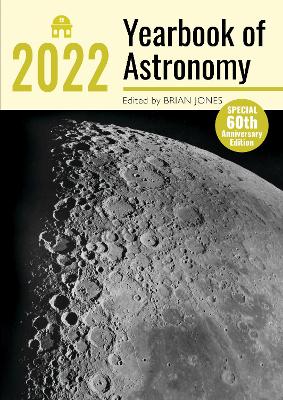Reviewed by annieb123 on
Yearbook of Astronomy 2022 is the 60th annual edition of the series, curated and edited by Brian Jones. Due out 30th Oct 2021 from Pen & Sword on their White Owl imprint, it's 352 pages and will be available in paperback and ebook formats.
This is the diamond jubilee edition of this amazing perennial resource. It's built on a no-nonsense, useful, and familiar format. A forward and introduction are followed by recommendations for using and getting the most out of the book. The following star charts, which comprise roughly 15% of the content, are split into charts for the northern and southern hemisphere. Following the charts, there's a short section with dates and data for moon phases and eclipse info and best viewing areas.
The bulk of the yearbook (as in previous years) is taken up by the monthly sky notes and articles. I really love that the 'meat' of these yearbooks are accessible and interesting to a broad range of users, from amateurs to academics. It's a very inclusive, well (and entertainingly) written guide for everyone.
Following the monthly sky notes are the articles whose author list reads like a who's who from Astronomy, Popular Astronomy, Astronomy FM, etc etc. Contributors include Neil Haggath, John McCue, Rod Hine, David H. Levy, Damian Peach (with whose gorgeous photography many readers will be familiar even if they don't know that they know his work), and many others.
Practical, well written, inclusive and classic, it's a worthy successor to a long line of Astronomy Yearbooks.
Personal confession. Some of my best memories are going out (with a homemade redlight) with my dad to look up at the stars. He gave me a lifelong love of and joy in learning and an appreciation for physics and astronomy particularly. I'm overjoyed that my dad lived long enough to know that my daughter, his granddaughter has gone on to study astrophysics and pursue a career as an astrophysicist.
I'm very happy and thankful that Pen and Sword picked up the publication for the Astronomy Yearbook and continue to offer it to enthusiasts worldwide.
I would encourage everyone to get outside and look up at our beautiful and amazing night sky.
Five stars, plus nostalgia value
Disclosure: I received an ARC at no cost from the author/publisher.
Reading updates
- Started reading
- 12 September, 2021: Finished reading
- 12 September, 2021: Reviewed
